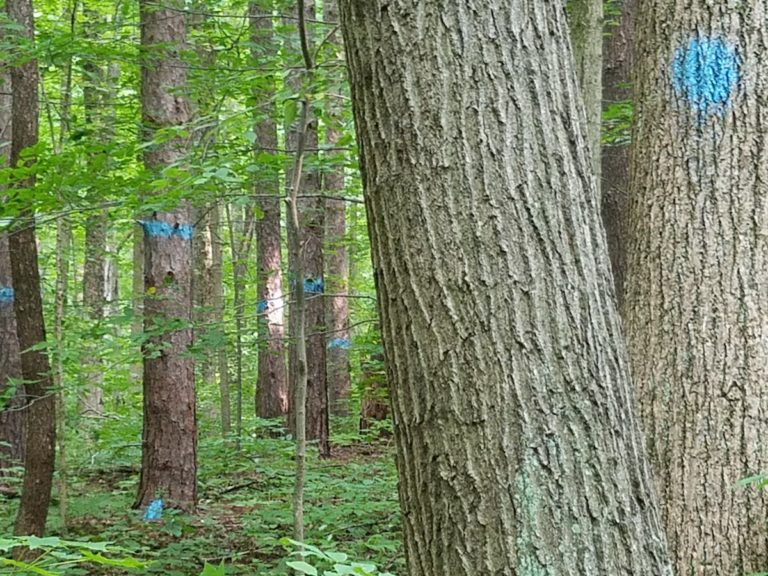by Jeff Stant, IFA Executive Director
In fall 2014, the Division of Forestry published a logging plan for Salamonie River State Forest near Wabash, Indiana. They are now getting around to marking the trees and are apparently preparing for a timber sale.
Why is IFA particularly concerned about plans to log this forest? At least five reasons:
The Division of Forestry is planning to log 260,000 board feet out of 847,000 estimated board feet in the tract to be logged (Compartment 1, Tract 3, 121 acres). This is 31% of the stand and doesn’t count an untold amount of additional trees that the DOF is planning to take in a timber stand improvement (TSI) after the cut that it considers to be inferior species or “cull” trees such as American beech and various hornbeams and maples.
It plans to eliminate the sycamores and a native species that are not very common, Kentucky Coffeetree, entirely from the forest. While DOF says a major purpose of the logging is to remove pine to allow native hardwoods to regenerate, the fact is only 29% of the wood harvested will be pine, so most of the trees logged will be the majestic hardwoods. Furthermore, the pine stands are receding with hardwoods already regenerating in them. Removing a lot of the pine and adjoining hardwoods all at once will change the character of the forest to make it much more sunny inviting in a lot of invasives and creating a virtual thicket that will be hard for hikers, horseback riders, and hunters to walk through.
The DOF is planning to remove invasive nonnative plants such as bush honeysuckle, autumn olive, and multi-flora rose in the timber stand improvement. However, these and other invasive species have been exploding across the state forests because the DOF’s logging is opening up the canopy to more sunlight and tearing up the forest floor, the two physical factors that give these aggressive invasive plants the advantage over native plants. Furthermore the DOF does not have the resources to go back into the forest regularly enough to control these hardy invasive plants which bounce right back from cutting.
It is hard to find forests as large as the 1,000 acre block of forest provided by Salamonie State Forest for many miles across much of central and northern Indiana — particularly a forest that large that the public can enjoy as wild nature. And Salamonie’s forested bluffs, ravines, limestone canyons, waterfalls and creeks flowing into the Salamonie River are a beautiful gem of wild nature — of state park caliber — worth preserving in their natural condition.
While Salamonie River State Forest is a smaller state forest than those in the southern half of the state, where most of our state forests are, in some ways it is more significant because the deep woods habitat that they provide is much rarer in northern Indiana.
IFA’s primary focus is on the management of our state forests because, while they are only 3% of Indiana’s forests, the state forests still provide some of the largest blocks of intact forest in the state and are the only state-owned public lands managed by the Department of Natural Resources where wilderness recreation, i.e., primitive camping, backpacking, long-distance hiking, orienteering, foraging, etc, is possible.
We must speak out because the DNR has increased the amount of logging in these forests by 400% over the past 13 years: 3 to 4 times more logging than was ever done in these forests for the 102 years that they existed prior to 2005. At the current authorized rate of 14 million board feet being logged per year, the DNR will have logged through all tracts of the state forests within another 12-13 years.
This amount of logging is destroying the natural wilderness character of our state forests, the forests we all own together as Hoosier taxpayers.

